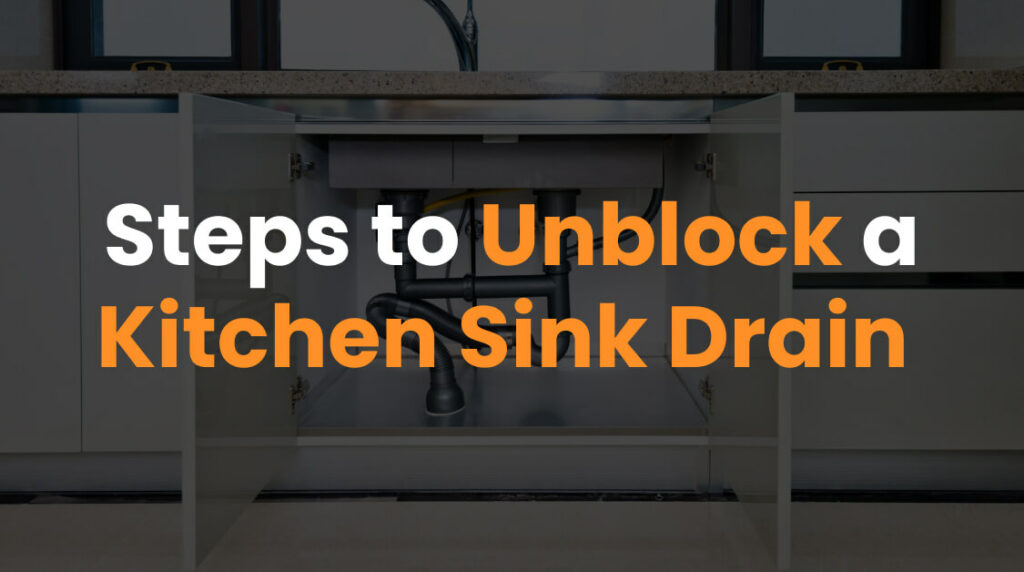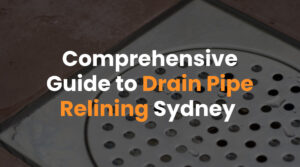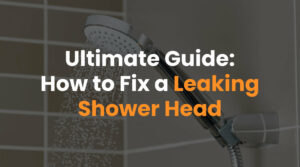A clogged kitchen sink can disrupt your daily routine and become a source of stress. Whether it’s a buildup of food particles, grease, or soap scum, blockages in your sink drain require immediate attention. Before reaching out to a plumber, there are several DIY methods you can try to unclog your sink effectively. This guide by Plumbwell Plumbing Services will walk you through simple yet effective steps to get your kitchen sink draining smoothly again, using common household items like baking soda, vinegar, and boiling water.
Identifying the Signs of a Clogged Sink
A clogged sink is not just an inconvenience; it’s a warning signal that your kitchen or bathroom plumbing system needs attention. Recognising the early signs of a clogged sink can save you time and prevent a minor issue from escalating into a plumbing disaster. Here’s a closer look at the telltale indicators that suggest your sink is on the brink of a blockage, and understanding these can help you take timely action to resolve the issue.
- Slow Draining: One of the first signs of a clog is water that takes longer to drain away. This gradual decrease in drainage speed often occurs because materials like food scraps, grease, or soap residue have started to accumulate in your pipes. Over time, these materials can form a partial or complete blockage, significantly reducing water flow. If you notice your sink taking longer to empty than normal, it’s time to investigate and address the cause.
- Gurgling Sounds: Gurgling or bubbling sounds emanating from your sink drain are not just odd; they indicate a problem. These sounds occur when air, trapped by the blockage in your pipes, is forced through the water in your sink as it attempts to drain. The presence of these noises is a clear indication that water flow is being obstructed, and air pockets are forming, suggesting that a clog is developing within your plumbing system.
- Unpleasant Odours: A foul smell coming from your sink is more than just a nuisance; it’s a symptom of decaying organic matter lodged in your pipes. Food particles, grease, and other substances can get stuck, decompose, and emit unpleasant odours. These smells are a clear sign that a clog has formed or is forming, as the buildup creates an environment where bacteria can thrive and produce these foul odours.
- Standing Water: Perhaps the most unmistakable sign of a clogged sink is the presence of standing water that refuses to drain. This situation indicates a complete blockage in your pipes, where water is unable to pass through at all. Standing water can attract pests, breed bacteria, and cause unpleasant odours, highlighting the urgency of addressing the clogged drain. If your sink is filled with water that won’t go down, immediate action is required to clear the obstruction and restore normal drainage.
DIY Methods to Unclog a Sink: Simple and Effective Solutions
The Power of Boiling Water: A Quick Fix for Minor Clogs
Pouring boiling water down the drain can often dissolve or dislodge minor blockages, especially those caused by soap scum or grease. It’s a straightforward first step before moving on to more involved methods.
Using a Plunger to Unclog a Sink Effectively
A plunger can be a powerful tool for dealing with sink clogs. For kitchen sinks, a standard cup plunger is usually effective. Fill the sink partially with hot water to create a seal around the plunger and pump vigorously to dislodge the debris causing the blockage.
Natural Solutions: Unclogging Your Sink with Baking Soda and Vinegar
This eco-friendly method utilises the chemical reaction between baking soda and vinegar to clear a blocked drain. First, pour boiling water down the drain, followed by a half-cup of baking soda. After a few minutes, add a mixture of one cup vinegar and one cup hot water. Cover the drain to contain the reaction and wait 5-10 minutes before flushing with more boiling water.
Advanced Techniques to Tackle a Blocked Sink
When basic methods fall short, advanced techniques can step in to effectively unblock a sink. These methods delve deeper into the plumbing system, addressing stubborn drain clogs that resist simpler solutions. Employing the right approach not only clears the immediate drain blockage but also preserves the integrity of your pipes and plumbing system.
Proper Use of a Plumber’s Snake in Your Sink Drain
A plumber’s snake, or drain auger, represents a step up from the basic plunger in the toolkit for tackling sink blockages. This tool is designed for those clogs that are just out of reach or too stubborn for simpler methods. Here’s how to use it effectively:
- Getting Started: Before using a plumber’s snake, ensure you have a bucket and gloves ready. This preparation helps manage any water or debris that may come out during the process.
- Insertion: Carefully feed the head of the plumber’s snake into the drain opening. It’s important to start slowly to avoid scratching your sink or damaging the drain.
- Advancing the Snake: Gradually turn the handle to extend the coil deeper into the pipe. You’ll feel resistance when the snake reaches the clog. Continue to apply gentle pressure and rotate the handle to help the snake navigate through the blockage.
- Breaking Apart the Clog: Once you’ve engaged the blockage, keep turning the handle to dislodge and break it apart. You may need to pull the snake out slightly and reinsert it to tackle the clog from different angles.
- Removal and Cleanup: After clearing the blockage, slowly retract the snake, cleaning it as it emerges from the drain. Flush the drain with hot water to wash away any remaining debris. Inspect the drain to ensure water flows freely, repeating the process if necessary.
- Caution and Care: Be mindful not to force the snake too aggressively, as this can damage pipes, especially those made of PVC or older metal that may be more susceptible to cracks and breaks.
When to Use Chemical Drain Cleaners: Safety and Precautions
Chemical drain cleaners offer a powerful solution for dissolving the organic matter that often causes sink blockages. However, their effectiveness comes with risks to both your plumbing and personal safety. Understanding the right circumstances for their use and the precautions to take can make all the difference:
- Assessing the Situation: Chemical drain cleaners should be considered a last resort after mechanical methods (like plunging and snaking) have been attempted. These chemicals are designed to dissolve organic matter quickly but can be harmful to both your plumbing system and health if misused.
- Choosing the Right Cleaner: Select a cleaner appropriate for your type of plumbing. For example, some formulas are specifically designed for PVC pipes and are less corrosive than others. Always read the label to ensure compatibility with your system.
- Following Instructions: Adhere strictly to the manufacturer’s guidelines regarding the amount to use, contact time, and safety precautions. Overusing chemicals or leaving them to sit longer than recommended can lead to pipe damage.
- Protective Measures: Wear gloves and eye protection when handling chemical cleaners to prevent skin burns and eye damage. Ensure the room is well-ventilated to avoid inhaling fumes.
- Application: If the sink is completely blocked, consider removing as much standing water as possible before applying the cleaner to ensure direct contact with the clog. Pour the recommended amount slowly and steadily to avoid splashes and spills.
- Aftercare: Wait the specified time before flushing the drain with hot water to clear the dislodged material. If the blockage remains, resist the urge to immediately apply more chemical cleaner, as this can exacerbate pipe damage. Instead, reassess the situation and consider contacting a professional plumber for persistent or severe clogs.
- Environmental Considerations: Be mindful of the environmental impact of chemical drain cleaners. Their toxic ingredients can contribute to water pollution. Explore eco-friendly alternatives or mechanical removal methods as first-line solutions to minimise environmental harm.
Preventative Measures: Keeping Your Sink Drain Clear
Ensuring a clear and functional sink drain is crucial for the smooth operation of your home’s hot water system and overall hygiene in your kitchen and bathroom. Regular maintenance and proactive measures can prevent the inconvenience and potential damage caused by a blocked sink. By adopting a few simple habits and performing routine checks, you can keep water flowing freely, avoiding the need for emergency interventions to unblock a sink. Here’s how to maintain clarity in your drains and ensure your sink remains a reliable component of your plumbing system.
Regular Maintenance Tips for a Clean and Clear Sink Drain
- Inspect and Clean the Sink Trap: The sink trap (the U-shaped pipe under the sink) can accumulate debris over time, causing a drain clog. Place a bucket underneath to catch any water and unscrew the trap to clean it out regularly.
- Plunge the Drain Occasionally: Even if your sink isn’t showing signs of clogging, using a sink plunger can help dislodge any beginning blockages that haven’t yet caused a noticeable problem. This is particularly useful for a double sink setup where blockages can affect both sides.
- Unclog Your Garbage Disposal: If your sink is equipped with a garbage disposal, ensure it’s running correctly. Occasionally, food particles can get stuck, not just in the disposal but also in the drain pipe leading away from it. Running the disposal with plenty of water and occasionally using ice cubes can help clean out the blades and the drain.
- Check for Slow Draining Sinks: If you notice your sink is draining slowly, don’t wait for it to become a full blockage. Use a combination of boiling water and a plunger to clear the clog early. If your sink isn’t draining after these efforts, it may be time to check deeper into the plumbing or call a professional.
- Regularly Flush Drains with Boiling Water: For both kitchen and bathroom sinks, pouring boiling water down the drain can help dissolve soap scum, grease, and other buildups that cause blockages. Doing this can keep your sink draining smoothly and prevent the buildup from becoming a bigger problem.
Signs That It’s Time to Call a Plumber for Your Blocked Sink
While many sink blockages can be resolved with DIY methods, there are certain situations where the expertise of a professional plumber becomes indispensable. Recognising the signs that it’s time to call in a plumber can save you from potential damage and more costly repairs down the line. Here are the key indicators:
- Repeated Blockages: If your sink keeps getting clogged despite repeated attempts to clear it, there might be a deeper issue within your plumbing system that requires professional attention.
- Water Backing Up: When water starts to back up in your sink or other fixtures when you use the sink, it indicates a problem that could be beyond your reach, possibly a blockage in the main sewer line.
- Bad Odors: Persistent unpleasant smells emanating from your sink drain could be a sign of a significant blockage or a break in the sewer line, both of which necessitate a plumber’s expertise.
- Slow Draining After Fixes: If your sink continues to drain slowly even after you’ve tried various methods to unclog it, there’s likely a more severe blockage or a problem with the plumbing system that a plumber needs to address.
- Water Damage or Leaks: Signs of water damage under your sink or in the surrounding areas can indicate leaks that might be related to a blockage. A professional can identify and fix the source of the leak.
- Noises from the Pipes: Gurgling sounds from your pipes when water is draining can indicate a venting issue or a blockage further down the system, which requires professional diagnostics and solutions.
How a Professional Plumber Can Fix a Blocked Sink Efficiently
A professional plumber brings expertise, tools, and techniques to efficiently address and resolve sink blockages, regardless of their complexity. Here’s how they tackle the issue:
- Thorough Diagnosis: Plumbers start with a comprehensive assessment to identify the exact cause and location of the blockage, using tools like drain cameras.
- Professional Tools and Techniques: Plumbers have access to high-grade tools such as motorised drain augers, hydro jetting machines, and more, which can remove even the most stubborn blockages without damaging your pipes.
- Expertise in Plumbing Systems: Their understanding of how different plumbing systems work allows them to address the root cause of the blockage, ensuring a long-term solution rather than a temporary fix.
- Preventative Maintenance Advice: Beyond fixing the immediate problem, plumbers can provide valuable advice on how to prevent future blockages, tailored to your home’s specific plumbing system.
- Guaranteed Safety and Efficiency: Handling chemicals or attempting to dismantle pipes without proper knowledge can be dangerous. Plumbers know how to navigate these risks safely, ensuring that your plumbing system is treated with care.
- Time and Cost Efficiency: Although hiring a plumber is an investment, it can actually save you time and money in the long run by avoiding repeated DIY fixes, potential damage, and more severe blockages.
Recognising when to call a plumber and understanding the value they bring can ensure that your sink and overall plumbing system remain in optimal condition, avoiding the inconveniences and potential damages of unresolved blockages.
Frequently Asked Questions
Can I unblock a sink using just hot water?
Yes, pouring hot water down the drain can often help dissolve grease and soap scum causing minor clogs. However, for more stubborn blockages, you may need to employ additional methods such as a sink plunger or baking soda and vinegar.
How do I use a sink plunger to clear a clog?
To effectively use a sink plunger, first, ensure there’s enough water in the sink to cover the plunger’s head. Firmly press the plunger over the drain opening and plunge vigorously several times to create suction and dislodge the blockage.
What should I do if my double sink isn’t draining?
For a double sink, plug one drain with a sink stopper and use a plunger on the other drain. This action focuses the plunging force on the clog. If one side is draining slowly, switch sides and repeat the process to ensure the blockage is cleared from both sides.
How can I clear a blockage in the sink trap?
If the blockage is in the sink trap (the curved pipe under the sink), place a bucket underneath to catch any water and unscrew the trap. Remove any debris stuck in the trap and rinse it with water before reattaching it to the drain pipe.
Is it safe to pour baking soda and vinegar down the drain of a kitchen or bathroom sink?
Mixing baking soda and vinegar creates a fizzing action that can help break down clogs naturally without damaging your pipes. This method is safe for both kitchen and bathroom sinks and is especially useful for clearing organic material and soap scum.
What should I do if my sink isn’t draining even after I’ve tried plunging and using baking soda and vinegar?
If your sink still isn’t draining after employing these methods, the clog might be further down the drain pipe or in the main sewer line. At this point, it might be necessary to use a drain snake or call a professional plumber to diagnose and resolve the deeper blockage efficiently.
How can I prevent my hot water system from causing sink blockages?
Regular maintenance of your hot water system, including flushing out sediment that can accumulate and lead to blockages, can prevent sink clogs. Ensure the temperature is set correctly to avoid the buildup of minerals that can contribute to blockages in both the hot water system and sink drains.
When is it necessary to replace the sink trap or drain pipe under the sink due to recurrent clogs?
If you frequently experience clogs and the methods to unblock the sink repeatedly fail, it might be due to a damaged or improperly installed sink trap or drain pipe. Inspecting these components for damage or misalignment and replacing them can permanently resolve recurring drainage issues.








